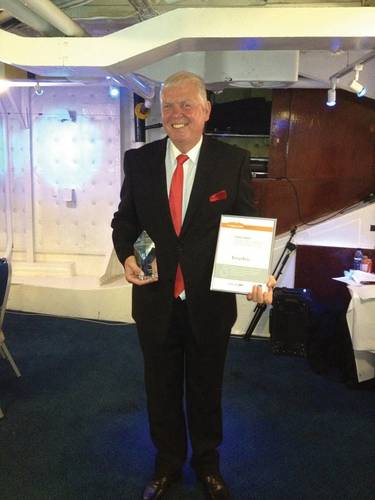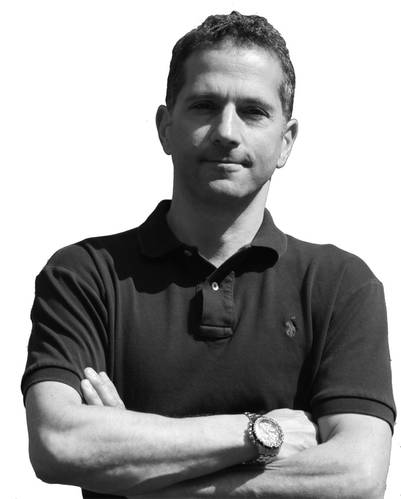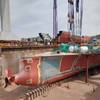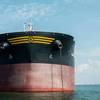The Magic Ingredients of a Healthy Safety Culture
“If you think safety is expensive, try an accident!”
This is the second in a series of Maritime Reporter and Engineering News articles on Safety Culture in the maritime industry. The first article, which appeared in our October, 2013 edition, discussed the importance of management leadership, training, measurement, a focus on learning rather than blame, and continuous reflection on safety. In this second article, safety culture expert Captain John Wright discusses the key ingredients of a healthy safety culture.
Talking with the Expert
I had the good fortune of meeting Captain Wright because of his involvement with the BC Ferries SailSafe project. SailSafe is a multi-phased project aimed at creating an industry-leading safety culture (and safety record) at BC Ferries. It is a project that the company I work for, Marine Learning Systems, is fortunate and proud to be a part of. SailSafe has seen time loss injuries cut in half, serious injuries reduced by two-thirds, and annual insurance claims costs reduced by over three-quarters. And the numbers continue to improve.
Captain Wright is a Master Mariner and has spent his long career in the maritime industry in a variety of roles including those of vessel master, marine superintendent, chief executive and general manager. All of John’s roles have had a focus on safety and cultural change. He holds a wide variety of certificates and qualifications concerning health and safety, risk management and safety technology.
In June, 2013, John was honored with a safety at sea award for training which recognizes innovation and excellence in the maritime safety industry.
I asked Captain Wright a number of questions about implementing a healthy safety culture:
Please start us off with a high-level overview of how a company can improve its safety culture?
The very best way to improve a safety culture, which means improve absolutely everything in the business, is achieved when a company decides to properly ask their employees this question in a structured way:
“What’s wrong and how can we fix it?”
Employees are rarely asked that question and when they are, their brilliant and often simple ideas end up on some poor hapless, overstretched manager’s desk, who is forced to put it in the ‘too difficult’ tray. The net result is an already demotivated employee becoming even more demotivated.
The answer, instead, is real workforce involvement and ownership of their own ideas. People are endlessly supportive of their own ideas. By allowing employees to implement their ideas for themselves, an organisation puts the enormous workforce ‘horsepower’ (which is otherwise underutilized), onto the ‘propeller shaft’. This results in:
● Reduced loss events (for ex., injuries and damage to equipment),
● Reduced turnover of personnel,
● Reduced training and re-training costs,
● Reduced sickness absence, and
● An increase in motivation, involvement, enthusiasm, communication, teamwork and quality of decision making.
For management, what is the biggest indicator that they can look for in their company to determine whether they have a safety and culture problem - before an accident occurs?
The most important of all is how well accidents, incidents and near misses (which we prefer to call ‘learning events’) are reported, acted upon and learned from. Under-reporting common and is a solid and reliable indicator. Another is how often directors, managers and front-line supervisors visit their people at their place of work, and how well they communicate with them. Is the communication conducted in a, ‘I speak, you listen’ way, or is it a conversation seeking the employees ideas on what’s wrong and how they think it can be fixed (which, by the way, they always know)? The quality of these conversations is critical and yet managers are rarely given any help with developing these communication skills - skills which will not occur spontaneously. Another clue to the culture is when training is the first thing to be cut when business is poor - it should be the absolute last thing that is axed.
If you had to say, what is the one most important ingredient in
culture change?
The quality of leadership from the top: The knowledge and commitment from the leadership team, their abilities as leaders to inspire their people and demonstrate their belief in the process, and their ability to prove (by their actions) to the most complete cynic in the workforce that they are genuinely putting the health, safety and welfare of their people as their number one priority.
What is the biggest challenge to positive culture change?
The ‘engine room’ of any organisation is its middle management. In shipping these are the superintendents ashore and the captains and chief engineers on the ships. Once the Board of Directors are committed to the process and the front line employees begin to recognise what is being attempted, then the main challenge is to convince these critical middle management employees of the need for this process and the need for them to change. They need to change from the ‘I speak, you listen’ command and control style of management, to the ‘How can I help you and how can I support you?’ method. They also need to be comfortable and empowered to ask their boss for help and support. This does not occur spontaneously! This is where the STCW 2010 mandated Human Element Leadership & Management (HELM) training becomes essential.
shipping these are the superintendents ashore and the captains and chief engineers on the ships. Once the Board of Directors are committed to the process and the front line employees begin to recognise what is being attempted, then the main challenge is to convince these critical middle management employees of the need for this process and the need for them to change. They need to change from the ‘I speak, you listen’ command and control style of management, to the ‘How can I help you and how can I support you?’ method. They also need to be comfortable and empowered to ask their boss for help and support. This does not occur spontaneously! This is where the STCW 2010 mandated Human Element Leadership & Management (HELM) training becomes essential.
How do the attitudes and behaviors of individuals relate to safety and culture change?
This question encompasses why culture change is a 5 to 10 year ‘voyage’. The ‘battleground’ is to change the collective attitudes, beliefs and values of the employees, since it is they that drive behaviours. It takes time for employees to understand that the company is serious about the process and that this initiative will not just be a passing ‘flavour of the month’. Once this occurs, usually after about a year or so, the 80 / 20 rule kicks in and 80% of the committed employees drag most of the other 20% along. In many cases the few remaining disenfranchised will leave. It is usual to expect that when people who are influencers in the company (and may often be early cynics) embrace the necessary changes of behaviour, they carry many others with him.”
Aside from attitudes, what are the most important factors of the human element that most companies need to address?
The first is standards of competence and the training needed to ensure those competencies. This includes especially (but not exclusively) human factor, leadership & management skills. All training needs to be validated, that is, it must be proven to be delivering at the sharp end and not just recorded in a tick box, which is so common and means nothing. The second is to ensure Standard Operating and Emergency Procedures are introduced and above all owned by the end users. This means employee involvement in their construction, who in turn will ensure they are simple, brief, relevant, updated and vessel / work area specific. The same workforce involvement needs to be embraced in areas such as the management of maintenance, design, choice of equipment purchased, ensuring effective closed loop communications, decision-making & a useful modern 360 appraisal system.
Is this change expensive?
The answer to this question is that oft quoted saying, “If you think safety is expensive, try an accident!” But even ignoring accidents, improved safety culture improves all aspects of operations.
One company found nearly $40M in savings from the process over a five year period and another turned a $7.5 M profit into $150M over a seven year period. There is nothing a company can do that is more productive. And more importantly, everyone goes home to their loved ones in one piece: Money can’t buy that level of job satisfaction!”
There are many important takeaways from our discussion with Captain Wright.
● Culture change takes time, but it is achievable.
● It requires that we expose errors and turn them into learning
opportunities.
● It requires real leadership (and
participation) to make it happen.
● It not only saves lives and prevents injuries, but it can be exceptionally good for the bottom line.
If you are not sold on the importance and accessibility of safety culture transformation, visit a vessel operator that has successfully undergone one. There is no better way to understand how powerful it can be. Most that have already undergone such a transformation will be very willing to receive you and tell their story - that’s just part of the culture. You will find the visit very compelling - I guarantee it.
Newport News Installs 30-Ton Propellers
Lindell Toombs, a Newport News shipbuilder with 41 years of experience, applies a protective coating to one of the four propellers on the aircraft carrier Gerald R. Ford.
Murray Goldberg
is CEO of Marine Learning Systems. An eLearning researcher and LMS developer, his software has been used by 14 million people worldwide.
t: 352-692-5493
www.MarineLS.com
(As published in the November 2013 edition of Maritime Reporter & Engineering News - www.marinelink.com)
















